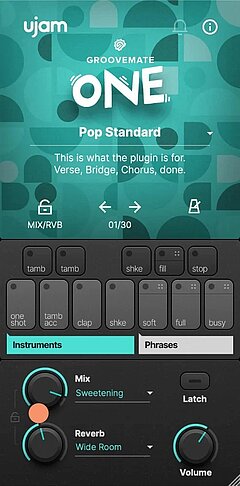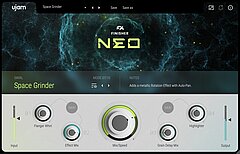How to Produce Pop Trap
Create trap music like your favorite pop artists, with the exact drum sounds, rhythms and production techniques used in this growing subgenre
JUNE 6TH, 2021
You can follow along with this article using the stock plugins in nearly any DAW, regardless of what sample packs or synths you own. If you’d like to get even more of a jump start, try out our new Beatmaker GLORY, focused specifically on making pop trap as easy and accessible as possible; you can try it for free within our trial period!
Regardless of the tools you use, it’s invaluable to learn how to build a beat in any genre from the ground up — which is the focus of everything below!
Making pop trap sounds
Like a ton of rap and hip hop, the key to unlocking an excellent drum sound is to look back at classic 808 kicks, snares, claps, and hi hats. Each has a very particular sound that, when blended with some hefty modern production techniques, makes for ultra punchy pop tracks that will grab your audience by the ears and hold on tight!
Firstly, kicks — the basic construction is to have a sine wave that rapidly descends from a high pitch to a very low one (literally milliseconds). Once you have the pitch envelope down, use a volume envelope to shape the sound. If you want the kick to be pitched, use a very gradual amp envelope to let the pitch fade into the distance. On the other hand, it’s often useful to remove the pitch entirely so the kick and bass don’t clash — in this case, create a sharper release that cuts off the kick just as it starts to hint at a specific pitch.
Another benefit of this is that it’s often easier to get a punchy kick when you’re not concerned about preserving the pitch. Layer clicks, white noise, and other sounds on top of this sound, and you’ll begin shaping it into something unique — try to stick to 3 layers, as kicks get messy very quickly. Tighten things up with some compression and you’re on your way!
Snares, on the other hand, are perfect territory for crazy layering, including multiple white noise samples, clicks, smacks, mini reverb tails and anything else you choose. Once you get the basic sound down, you can be very flexible. Start with a descending sine wave similar to the way you do the kick, but ending somewhere around 200 Hz (you may want to tune it to the key of your track, but this often isn’t necessary); add a volume envelope that cuts off quickly after the sine wave hits its fundamental pitch.
Then add white noise with a slow attack and release so it starts from silence and hits max volume as the fundamental tone sounds, then release — this way, it won’t clash with the snare attack and the tail simulates the effect of the actual ‘snare’ on a real drum. Layer in a click sound from any source you like: another 808 snare, a keyboard clack, almost anything short, punchy and non-pitched! Drive the entire combination of sounds into some heavy distortion to glue them together and emphasize the fundamental tone of the snare, and add compression for extra punch.
Claps are much simpler: find several you like, and layer them together how you see fit, adjusting volume envelopes and making sure they don’t clash with one another. Hi hats you’ll generally want to leave as is, and you can find tons of easily applicable samples.
Pop trap rhythms
With every beat, start by internalizing the consistent back and forth feel of the kick on beat 1 and snare on beat 3. At times you’ll want to add more, but you’ll almost always find some variation of this in pop trap at virtually any tempo and style. Syncopated kicks are very common in between these moments, as are ‘ghosted’ snare hits (both softer and quieter), which you’ll get a feel for over time.
The character of the beat comes largely from closed hi hats, which are often very rapid and contain lots of 8th, 16th and 32nd notes to fill in the space in the beat (particularly when you want to drive the beat forward and create extra momentum). Other times you’ll want tons of space, opt for open hi hats (longer sustain) with a couple closed hi hats in between to create more of a ballad feel. You can get a quick start on this style by using UJAM’s pop trap-focused Beatmaker GLORY! The Stayin Humble preset is a perfect example of this sort of hi hat action, and it’s super simple to drop into your session.
Pop trap is often based around looped beats, so it’s easy to struggle with making your songs less repetitive — but it doesn’t take much to add variety. One of the quickest ways to do this is to swap your 808 snare for a clap, or vice versa; this will immediately alter the tone of the section and maybe even give you inspiration for what else you can change! Here are a few other quick changes you can make:
- Give your track more energy by switching from ‘dull’ closed hi hats to samples with more high frequency content
- Use a ‘small’ kick in the verse and a heavier, bassier and punchier one in the chorus
- Switch between fast, closed hi hats and slow, open ones
Designing the perfect bass
Often, pop trap basses have a lot of heat and aggression in them, largely owing to the particular distortion modules applied in your synth of choice.
Start with a sine wave and apply a very gradual release to the volume envelope (about 2 or 3 seconds); one of the keys to producing pro-quality pop trap is using space thoughtfully, and this gentle decline in volume on each note end creates just enough space to make each subsequent bass note more powerful. Be sure this envelope comes after the distortion, otherwise the bass tone will change over time and the decline in volume will no longer be mostly linear.
Take your time deciding on the right distortion, as different types will create different harmonics in the sine wave, radically changing its tone color. Be aggressive, because you’re about to cut into it hard with a low pass filter. Use a gentle slope and lower the cutoff until the filter is just barely above the highest note you play in your track (if you want to get more advanced, set keyboard tracking to change the filter cutoff, giving you a more balanced sound across all pitches). You can also start with other waveforms and skip the pre-filter distortion module if you want to experiment. After the low pass filter, you can add another distortion to add back in new harmonics to the altered sound of the bass.
Massive and Monark are both excellent synths for creating this style of bass — Massive for its precision, control and reliability, and Monark for its authentic analog tone and excellent portamento settings. You can also start with a bass sample and play a full bassline using a sampler if there’s a specific sample you like; many DAWs include a sampler with their stock plugins, and with a bit of tweaking, this is usually enough to get to the sound you’re looking for.
A nice touch, while not necessary, is to add portamento that creates a slow slide in between notes. With very few notes, you can create the impression of a more complex sound as you cover a wider pitch range. Ariana Grande’s God is a woman is a great example of this style of bass — listen to the pitch jumps and how each slides smoothly into the next note instead of hitting it dead on:
A couple bonus production techniques for your arsenal
Typically, pop trap has a lot of energy in the upper frequencies, giving it an airy, clear sound you’ll likely want to replicate. Slate Digital has an excellent free plugin for this called Fresh Air, allowing you to boost high frequency presence with just two knobs. It’s always best to mix with this in mind and make as many instrument-level adjustments as possible, but if the mix still doesn’t stack up to your liking, you can do this across the master bus to give things a little lift.
This segues perfectly into another core ingredient of pop trap: silky smooth reverb, especially on vocals. In many genres, you want to use reverb to create a realistic space — but with pop trap, we’re looking to do the exact opposite! You want to shoot for shimmering, huge spaces with a long reverb tail on vocals, and perhaps also on synths, guitars and other instruments. But not on the drum beat or bass — if you keep them tight and punchy to anchor the song while adding the right amount of reverb elsewhere, your pop trap songs will quickly gain a ton of depth. To get a better idea of this effect, try out the Clouds preset in UJAM’s Finisher NEO and mix it in gently with some of the instruments in your track!
Wrapping up
Trap is becoming an increasingly integral part of popular music, and if you want to stay on the cutting edge of music production, it’s invaluable to have these production techniques in your arsenal. Once you nail the process of producing 808-style drums and incorporating them into pop trap, you’ll have a skill set you can call on anytime you’re creating popular electronic music, especially if you’re collaborating with other artists and vocalists!
The process is particularly simple with pop trap — which makes it that much more important to nail the fundamentals. With less complexity, the nuances in distortion settings, compression, rhythm and everything else become much more obvious. However, when you get a feel for pop trap — and with consistent practice, you will — you’ll have a set of tools you can bring to any genre you choose, rounding out your abilities as a producer and helping you build upon your own unique sound. Happy producing!
Stay up to date
Sign up and we’ll send you an e-mail with product news and helpful stuff every now and then. You may unsubscribe at any time.
Defy Limits
We develop software solutions that enable people to create, consume and interact with music.



